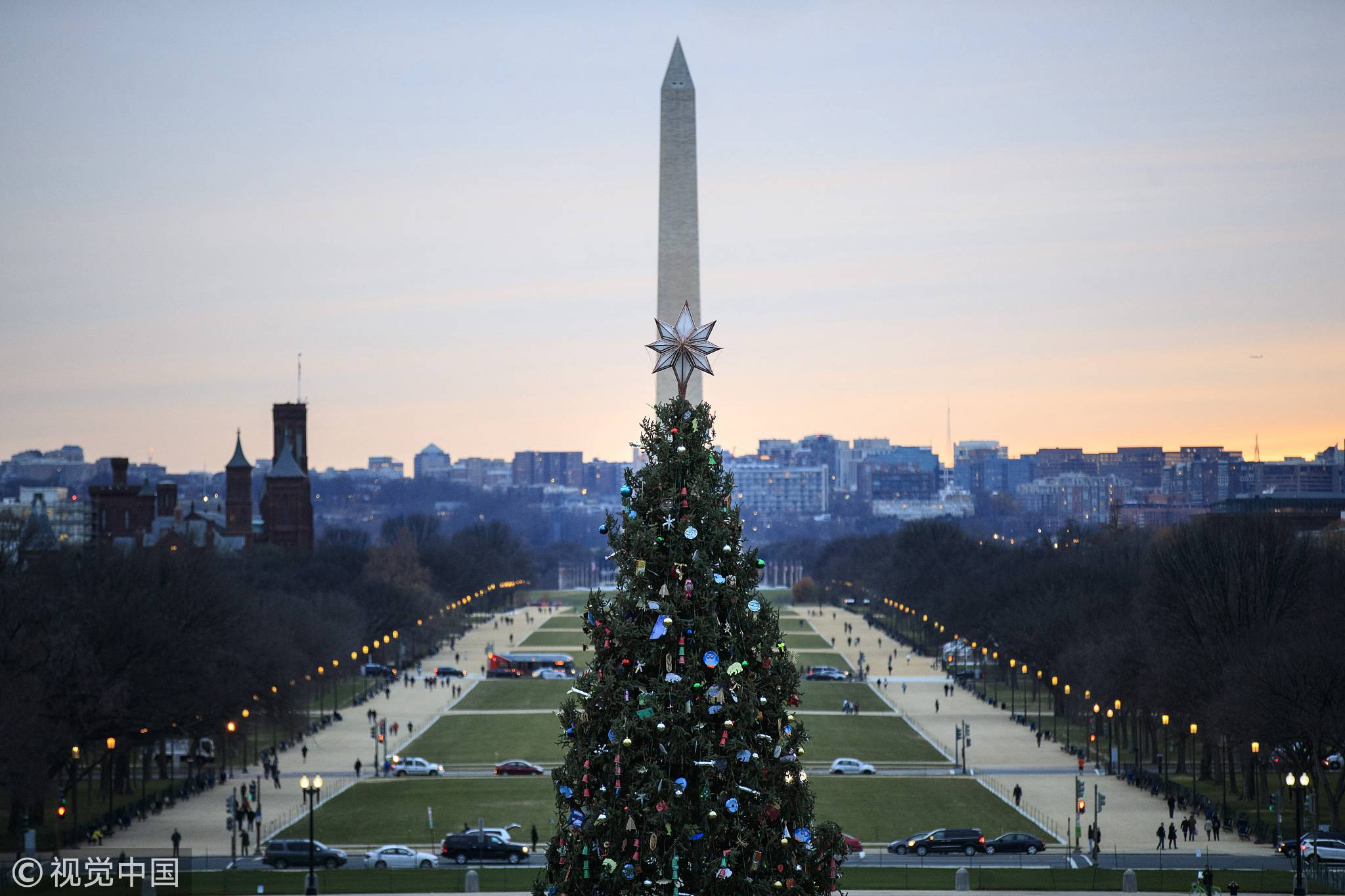
Culture
19:51, 18-Dec-2018
Americans to pay more for real Christmas trees due to supply shortage
Updated
19:31, 21-Dec-2018
CGTN

Americans are expected to pay a little more for a real Christmas tree in preparation for the holiday season as the industry is facing a supply shortage after a decade of recession.
The average price paid for a real Christmas tree in 2017 increased to 75 U.S. dollars, up 30 cents from the previous year's price tag, according to a National Christmas Tree Association (NCTA) survey conducted by Nielsen/Harris among 2,086 American adults on January 9-11, 2018.
This year, prices will probably rise again, maybe as much as five to 10 percent in some areas, NCTA spokesman Doug Hundley told CNBC.

A view of a Christmas tree before the start of the U.S. Capitol Christmas Tree lighting ceremony on Capitol Hill in Washington, D.C., December 6, 2017. /VCG Photo
A view of a Christmas tree before the start of the U.S. Capitol Christmas Tree lighting ceremony on Capitol Hill in Washington, D.C., December 6, 2017. /VCG Photo
The U.S. Christmas tree industry had experienced a decade of recession between 2005 and 2015 as a boom in Christmas tree planting in the 1990s and early 2000s led to an oversupply of the trees. Moreover, the financial crisis in 2008 dealt another blow to the tree growers to plant more trees.
An evergreen conifer takes between eight and ten years to grow into a mature six-foot fir, so the impact is felt years later.
However, the lackluster situation changed after 2015. Christmas tree prices increased 17 percent from 2015 to 2017, according to another report by the National Christmas Tree Association and San Francisco-based mobile payment firm Square.
"While prices have increased over the past two years, this is the first time in more than a decade that many local tree farmers are profitable," Tim O'Connor, executive director of NCTA, said in the report published last month.

Workers walk past Christmas trees at Mr. Tree Farm in Blacklick, Ohio, U.S. /VCG Photo
Workers walk past Christmas trees at Mr. Tree Farm in Blacklick, Ohio, U.S. /VCG Photo
The report also noted that the Christmas tree buying season this year kicked into high gear on Black Friday with an average price of 77 dollars and spiked to 81 dollars on Cyber Monday.
Despite the early renaissance for Christmas tree farmers, competition from fake tree producers remains. Rising prices of real trees could drive some consumers to buy artificial ones that can be reused for five to 10 years.
The NCTA survey showed that the number of fake Christmas trees purchased increased by 13 percent from 18.6 million in 2016 to 21.1 million in 2017, while the number of real trees sold remained roughly unchanged at 27.4 million both in 2016 and 2017.
Source(s): Xinhua News Agency

SITEMAP
Copyright © 2018 CGTN. Beijing ICP prepared NO.16065310-3
Copyright © 2018 CGTN. Beijing ICP prepared NO.16065310-3